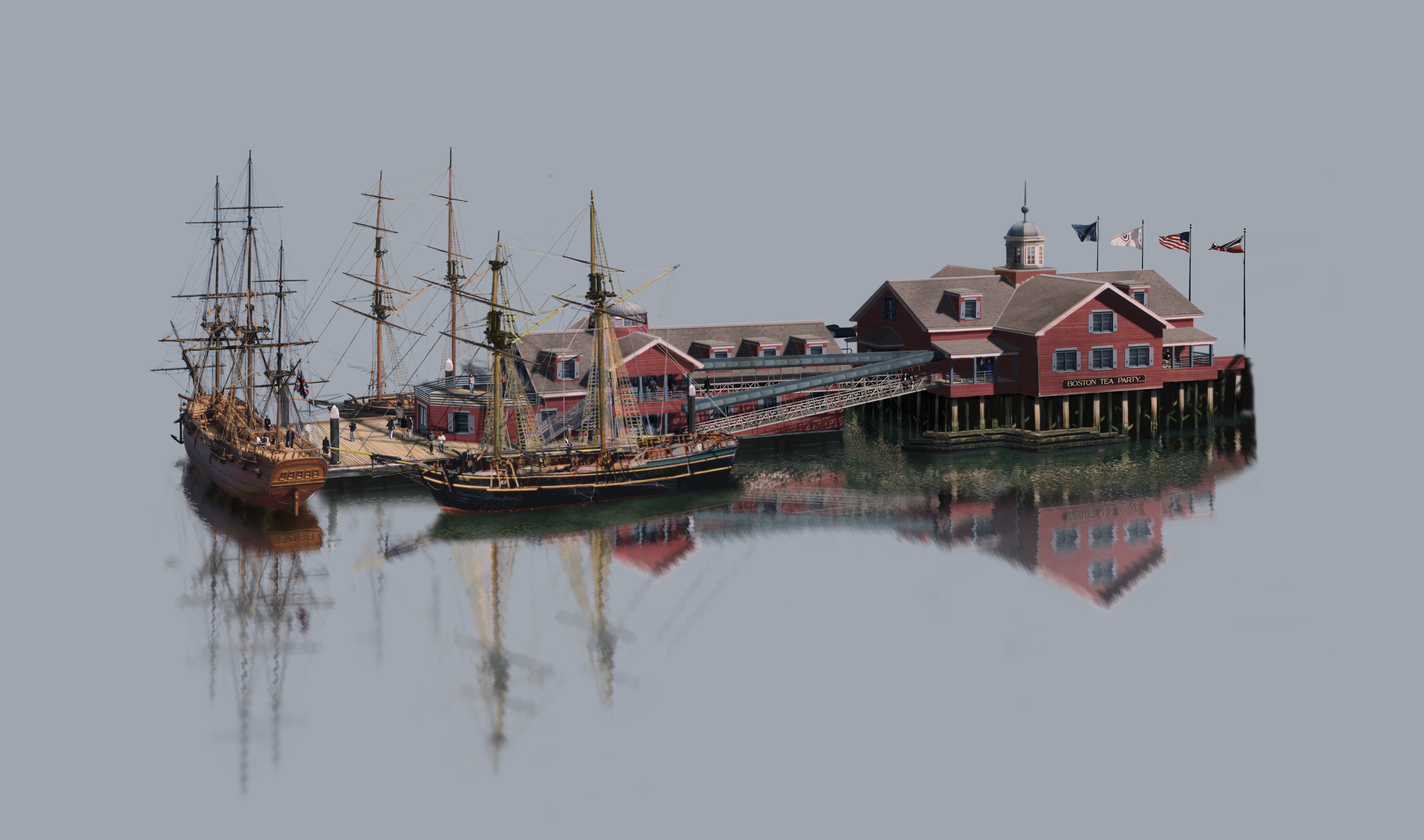AUGUST 7, 2012--Merging the building industry’s latest technology with one of the most famous stories in American history, Suffolk Construction recently completed construction of the new $27 million Boston Tea Party Ships & Museum in time for its grand opening ceremony.
Suffolk leveraged its “build smart” approach and state-of-the-art technologies to meet numerous challenges on this 18,700-sf project. One of the most significant challenges was finding a way to house the extensive mechanical, electrical, and plumbing (MEP) systems in the unusually tight confines of the museum’s attic space. To address this challenge, Suffolk implemented virtual models and BIM early in the planning process to re-work the layout of the MEP systems to ensure they would fit in the allotted space. This innovative solution allowed the team to prefabricate much of the MEP components off site, allowing for a more efficient installation on this very tight building site.
The two-story Boston Tea Party Ships & Museum, designed by Margulies Perruzzi Architects, sits on a floating barge with a Tavern/Tea Room on the top floor. The barge is surrounded by two historic replica ships, with a third ship expected to be added in 2014. The adjacent pier building contains a retail store, meeting rooms and offices. +
Related Stories
Transit Facilities | Feb 4, 2015
London mayor approves plan for a bicycle highway
The plan will guarantee bike riders a designated stretch of street to ride from east to west through the city.
Sports and Recreational Facilities | Feb 4, 2015
Arup unveils plans for the new A.C. Milan stadium
The venue will include a modern stage for the home matches together with a hotel, sports college, restaurants, children’s playground, green areas, and spaces open to the city and dedicated to public use.
Higher Education | Feb 3, 2015
Integrated Learning Neighborhoods: A solution for linking student housing with the typical student experience
Just as urban housing fits into the city as a whole, student housing can be integrated into the campus network as a series of living/learning neighborhoods, write Gensler's Brian Watson and Mark McMinn.
Office Buildings | Feb 3, 2015
5 trends transforming workplace design
RTKL's workplace design expert Jodi Williams foresees healthier and more technologically enabled offices that allow productive worker interaction, wherever they happen to be.
Architects | Feb 3, 2015
Frank Lloyd Wright’s work nominated for UNESCO World Heritage Status
If selected, Wright’s work will be the first examples of U.S. modern architecture on the list.
Contractors | Feb 3, 2015
Nonresidential construction spending expands in December 2014
Seven of 16 nonresidential construction subsectors posted increases in spending in December on a monthly basis.
Office Buildings | Feb 3, 2015
Bjarke Ingels' BIG proposes canopied, vertical village for Middle East media company
The tensile canopy shades a relaxation plaza from the desert sun.
Fire-Rated Products | Feb 3, 2015
AIA course: Fire and life safety in large buildings
Earn 1.0 AIA/CES learning units by studying this article and successfully completing the online exam.
Multifamily Housing | Feb 2, 2015
D.C. developer sees apartment project as catalyst for modeling neighborhood after N.Y.'s popular High Line district
It’s no accident that the word “Highline” is in this project’s name. The goal is for the building to be a kind of gateway into the larger redevelopment of the surrounding neighborhood to resemble New York’s City’s trendy downtown Meatpacking District, through which runs a portion the High Line elevated park.
Healthcare Facilities | Feb 1, 2015
7 new factors shaping hospital emergency departments
A new generation of highly efficient emergency care facilities is upping the ante on patient care and convenience while helping to reposition hospital systems within their local markets.

















